Welding, with its brilliant flashes of light and showers of molten metal, is as much an art as it is a craft. But behind the mesmerizing play of sparks lies a slew of potential hazards that could spell disaster if not adequately addressed. Whether you’re a seasoned welder or just starting out in the industry, ensuring your safety should be paramount.
This blog will guide you to the personal protective equipment (PPE) crucial for any welder. Dive in as we explore each piece’s purpose and functionality, helping you navigate the welding world with confidence and care. After all, a safe welder is an effective welder, and with the right PPE, you can ensure your well-being while crafting masterpieces with metal.
Why PPE for Welding is Important?
Personal Protective Equipment (PPE) for welding refers to the specialized clothing and equipment that welders use to protect themselves from the numerous hazards associated with the welding process. These hazards range from ultraviolet and infrared radiation, sparks, and molten metal to harmful fumes. Here’s a breakdown of the primary PPE for welding:
- Safety First: The primary purpose of PPE is to ensure the welder’s safety. Welding without proper PPE can result in immediate injuries like burns or long-term health issues like respiratory problems or impaired vision.
- Enhances Productivity: When welders know they are protected, they can focus better on the task at hand, ensuring efficiency and precision in their work.
- Compliance with Regulations: Many countries have strict safety regulations, and not wearing the required PPE can result in hefty fines or legal consequences for the welder and the employer.
- Long-Term Health: Prolonged exposure to welding without proper PPE can lead to chronic health issues, such as respiratory diseases, reduced vision, or skin cancer due to UV exposure.
- Economic Sense: In the long run, investing in proper PPE is cheaper than dealing with medical bills from injuries or facing penalties for non-compliance with safety standards.
In essence, PPE is the first line of defense for welders, ensuring their safety and long-term health while allowing for efficiency and compliance with legal standards.
Essential Welding PPE: What You Need to Protect Yourself On the Job
Welding involves high temperatures, intense light, and hazardous materials, making it crucial for professionals and hobbyists to prioritize safety using appropriate Personal Protective Equipment (PPE). Here’s a breakdown of essential welding PPE and their importance:
1. Welding Helmets
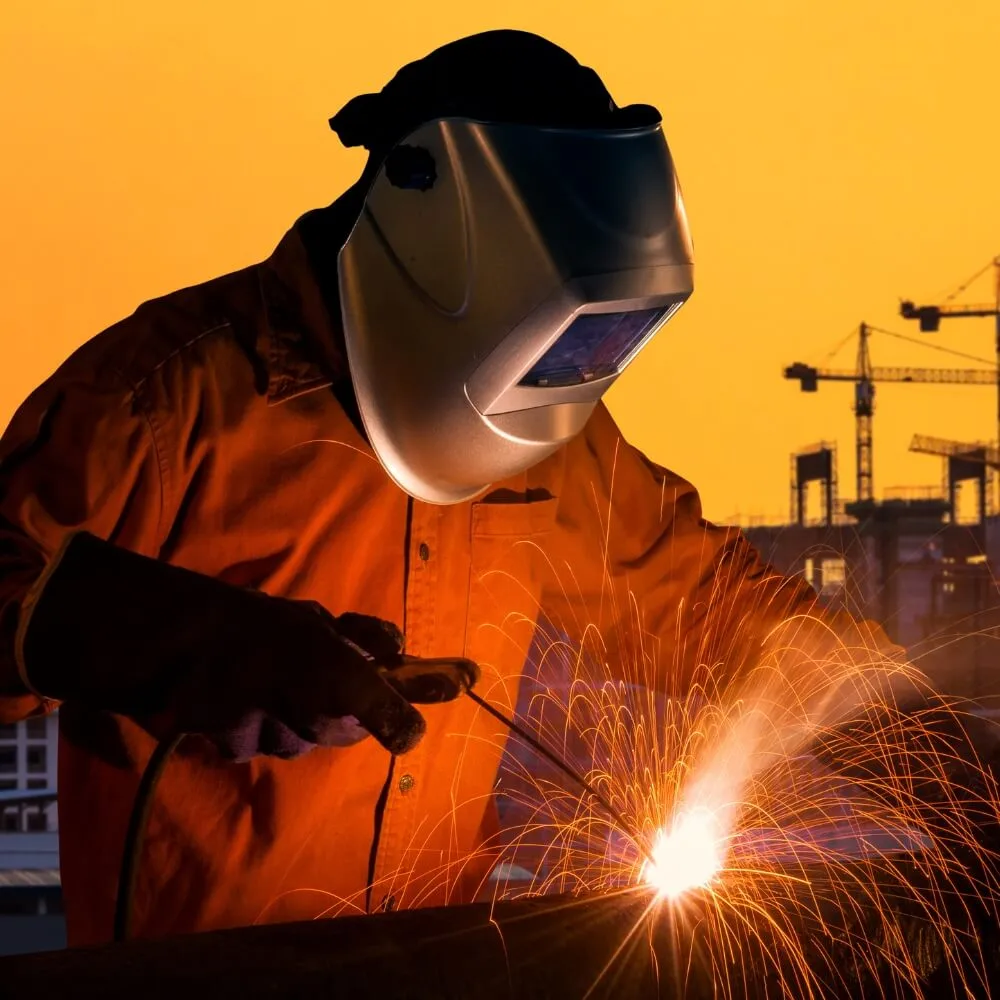
Welding helmets serve as a welder’s first line of defense against many potential hazards. Their primary purpose is safeguarding the eyes and face from harmful ultraviolet (UV) and infrared (IR) rays emitted during welding. Unprotected exposure to these rays can result in painful conditions like “arc eye” or “welder’s flash,” a feeling often compared to having sand thrown in one’s eyes. Additionally, helmets guard against flying sparks and spatter that can cause burns or other injuries.
With technological advancements, modern welding helmets have evolved beyond the traditional passive lenses. Auto-darkening lenses have become increasingly popular. These lenses darken automatically within milliseconds in response to the bright light produced by welding, allowing for a seamless transition between light and dark states. This quick adaptation protects the eyes and improves efficiency by eliminating the need for welders to lift or adjust the helmet manually.
2. Safety Glasses
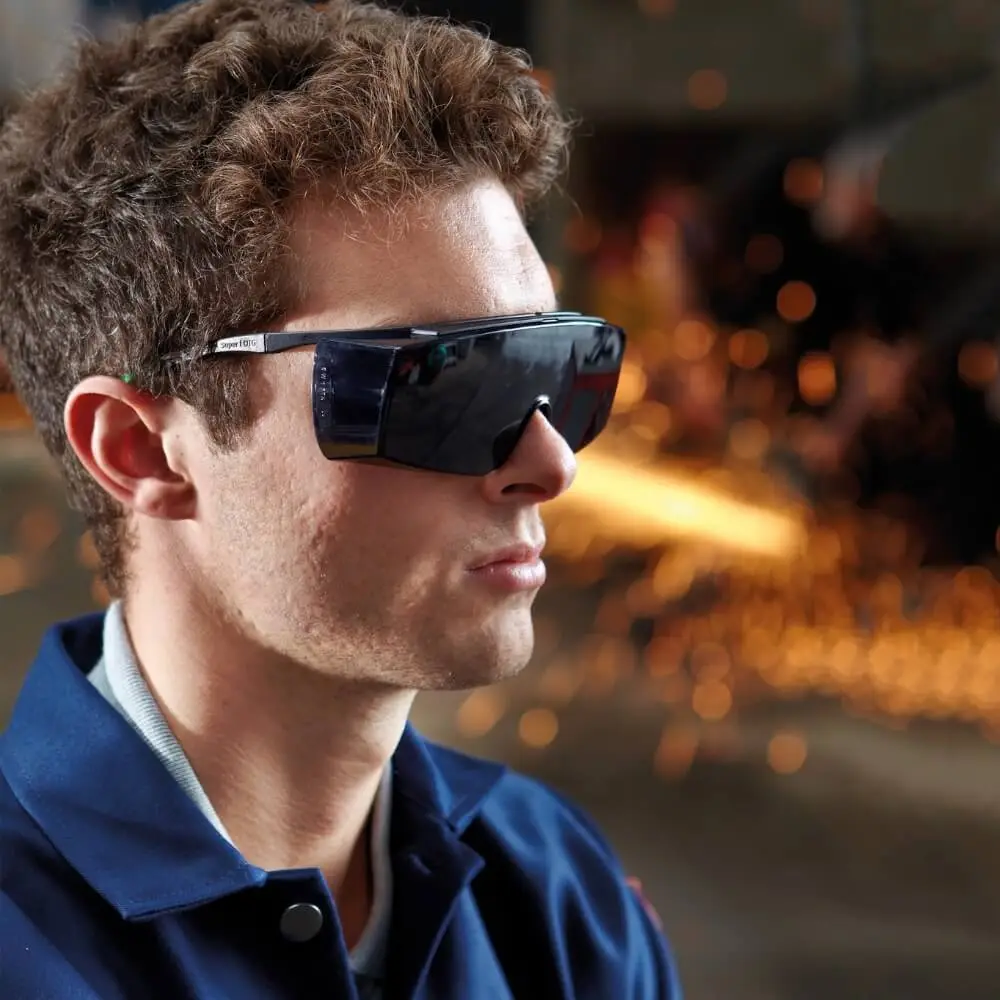
Even with a welding helmet on, safety glasses provide an essential additional layer of protection. They are crucial during lifting the helmet, such as setup or inspection, to protect the eyes from unexpected sparks or debris. The central role of safety glasses is to act as a barrier against smaller flying particles that might find their way beneath the helmet.
Safety glasses with side shields offer comprehensive protection, ensuring particles can’t easily access the eyes from any angle. This comprehensive protection is invaluable because any foreign object entering the eye can cause significant discomfort or injury.
3. Welding Gloves
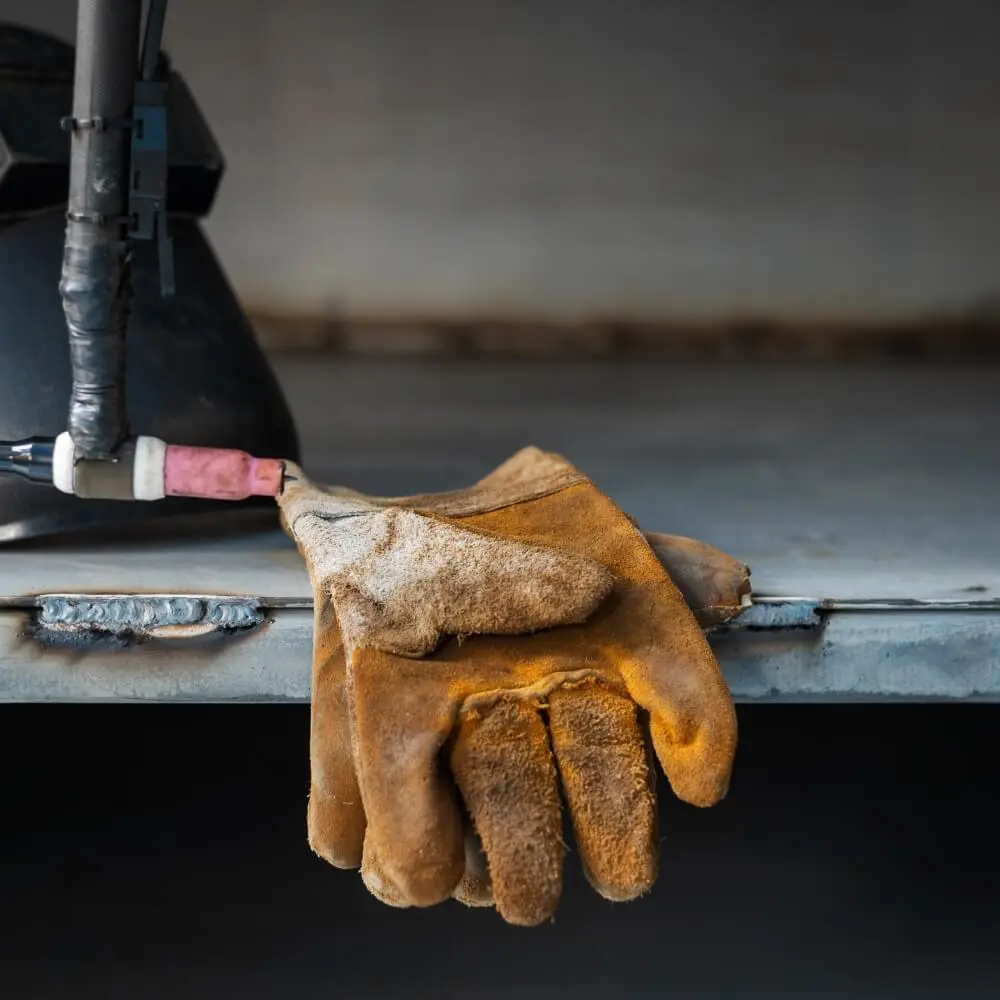
The hands are constantly at work during welding, maneuvering the welding torch and ensuring precision. As such, they are at high risk of extreme heat, spatter, and radiation exposure. Welding gloves, designed explicitly for this task, are indispensable. Typically constructed from thick leather or other fire-resistant materials, these gloves insulate the hands from the intense temperatures involved in welding. Their design considerations often depend on the specific welding technique in play.
For instance, TIG (Tungsten Inert Gas) welding requires a higher level of skill, so gloves designed for this method might be thinner, allowing for more precise movements. In contrast, MIG (Metal Inert Gas) or stick welding, known for producing more spatter, calls for thicker gloves, granting greater protection against the hot metal.
4. Fire-Resistant Clothing
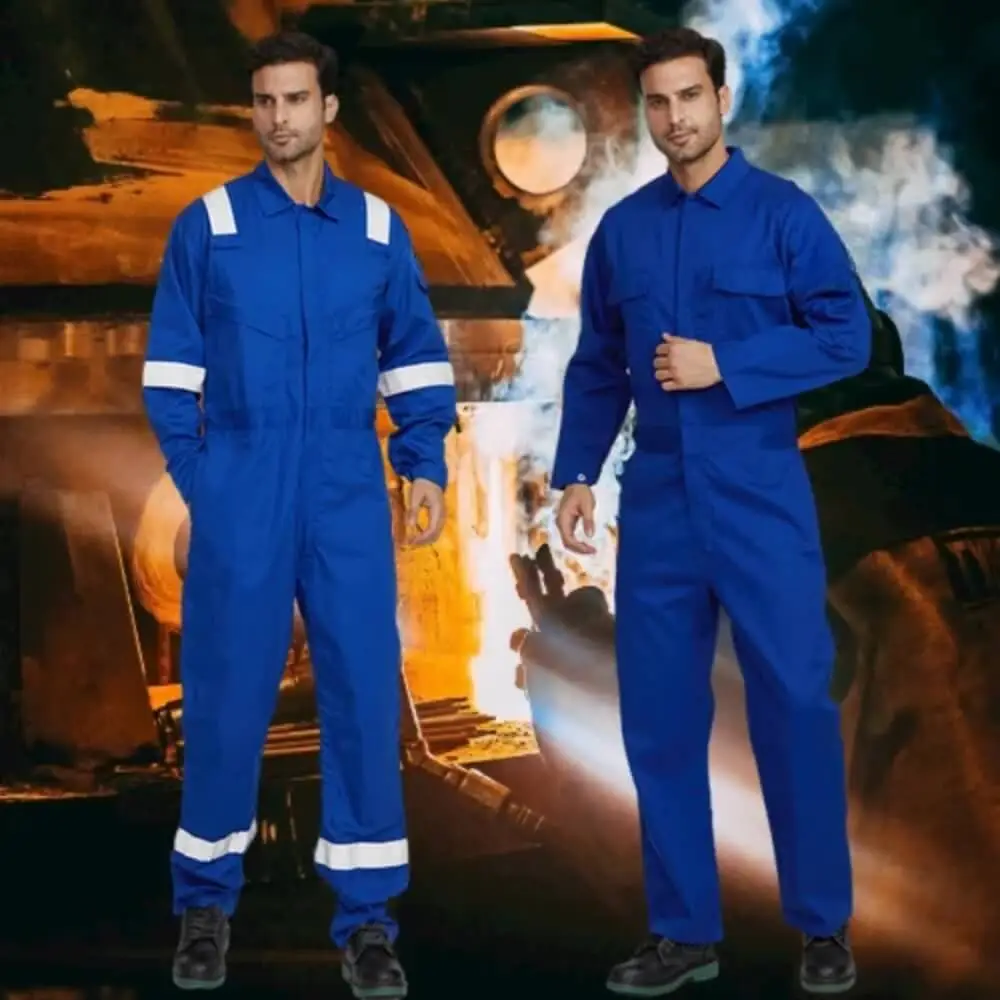
The intense heat and light produced during welding mean that the skin if left unprotected, is vulnerable to UV radiation and potential burns from hot metal or sparks. Fire-resistant clothing protects against these hazards, ensuring the welder’s body remains safe. Such clothing is made from leather or specially treated cotton that resists ignition. The design also plays a role in safety.
For example, pants designed for welders usually lack cuffs. This seemingly small design choice ensures that sparks and metal fragments aren’t trapped, reducing the risk of burns. In essence, fire-resistant clothing is a protective shield, guarding the skin from the welding workspace’s harsh environment.
5. Welding Aprons or Jackets
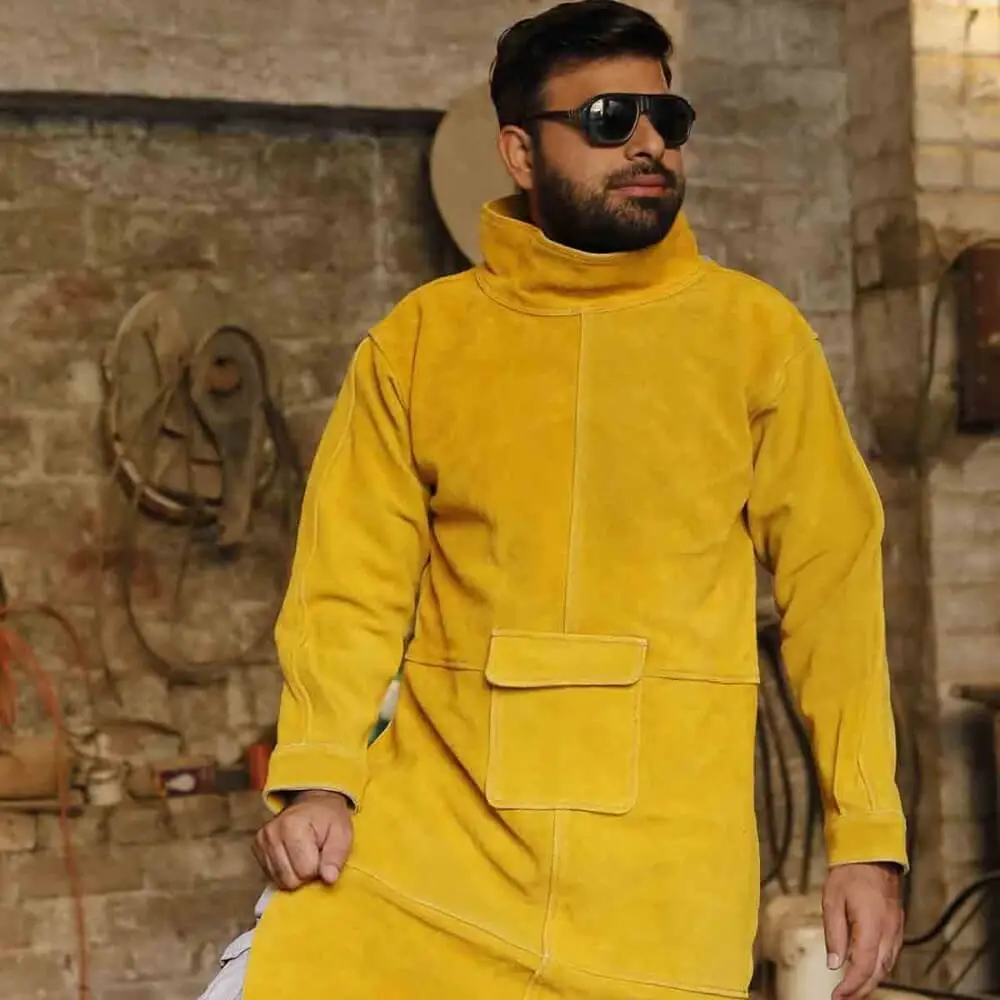
Welding aprons and jackets serve as an extra shield, predominantly for the front of the body. Given the welder’s posture during work, the front torso is especially vulnerable to flying sparks and hot debris. While fire-resistant clothing provides overall protection, these specialized garments add another layer of security.
Made predominantly from leather or other fire-resistant materials, these pieces are designed to withstand the rigorous challenges the welding environment poses. Beyond their protective function, many welding aprons and jackets come with functional designs, incorporating pockets that allow welders to carry essential tools, ensuring that everything they need is close at hand and reducing work interruptions.
6. Respirators
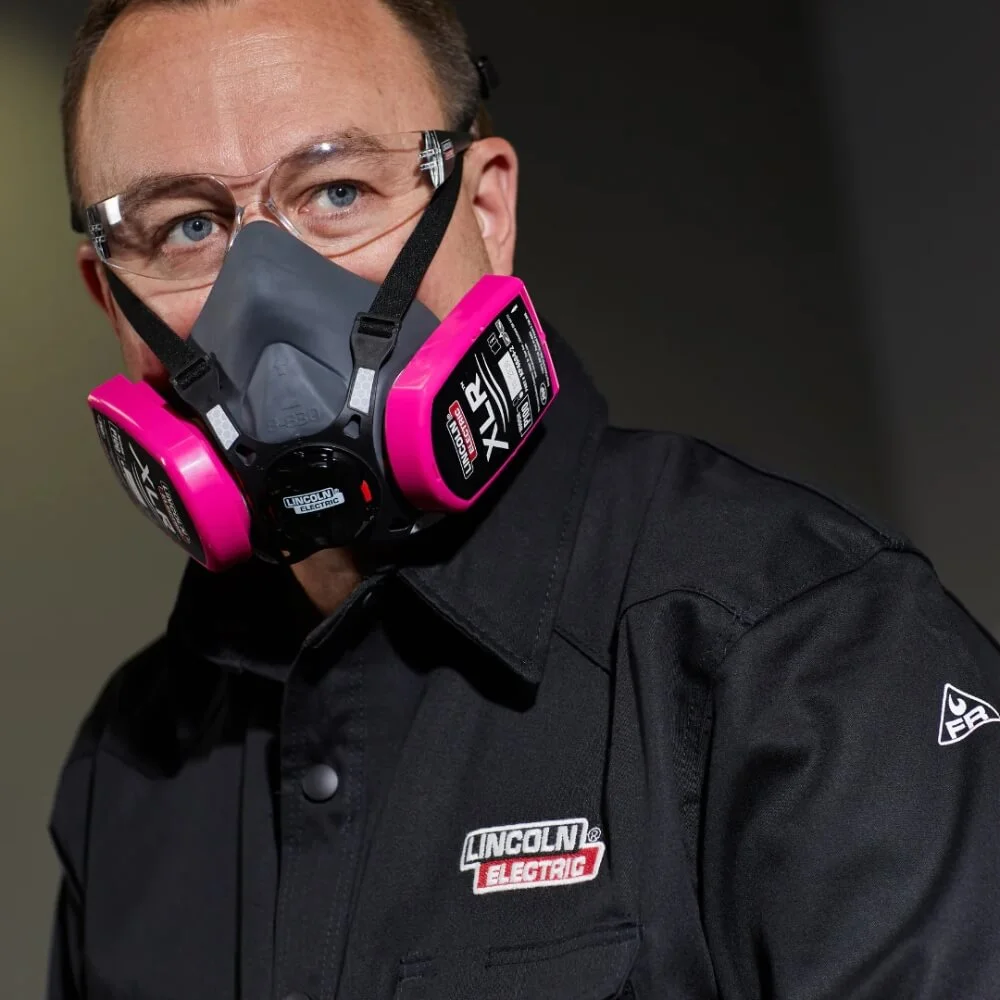
The act of welding, while producing sturdy joints, also emits a cloud of fumes and particulates, many of which can be harmful if inhaled. Respirators play a vital role in safeguarding the respiratory health of welders. Depending on the specific welding task and the environment, the requirements for respiratory protection can vary. Some tasks might only need a disposable mask to filter out larger particles.
At the same time, more intensive jobs, especially in confined spaces or where more toxic materials are involved, might necessitate full-face respirators. Critical to the function of any respirator is its fit and the appropriateness of its filters. A well-fitted respirator ensures no unfiltered air reaches the lungs, and the right filter type ensures that harmful particulates are trapped.
7. Safety Footwear (Welding Boots)
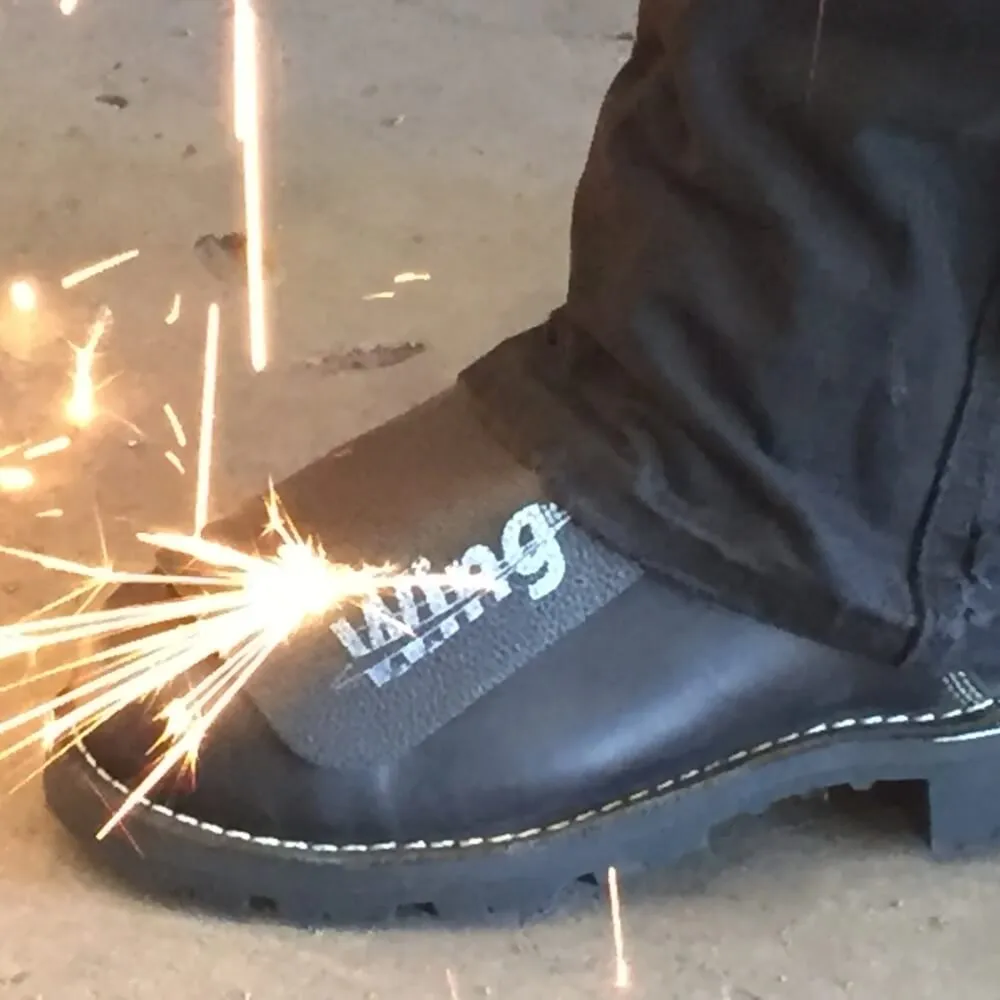
The ground is often littered with hot metals, sparks, and other debris in the welding environment. Protecting the feet is as crucial as shielding any other body part. Welding boots, designed specifically for this environment, often come made from sturdy materials like leather.
Their high-topped design is intentional, ensuring no sparks or hot metal can enter the shoe. Some welding boots even incorporate metatarsal guards, offering added protection against heavy falling objects and further ensuring the safety of the welder’s feet.
8. Ear Protection (Ear Muffs or Plugs)

Welding doesn’t just pose a visual and physical threat; the noise generated can be harmful over extended periods. Ear protection, whether through ear muffs or plugs, helps shield the ears from this persistent noise, reducing the risk of long-term hearing damage.
Additionally, fire-resistant ear protection becomes vital in environments with a risk of sparks or molten metal flying around. Such ear muffs not only shield from noise but also prevent the entry of hot substances, which can cause severe burns.
9. Welding Caps or Bandanas
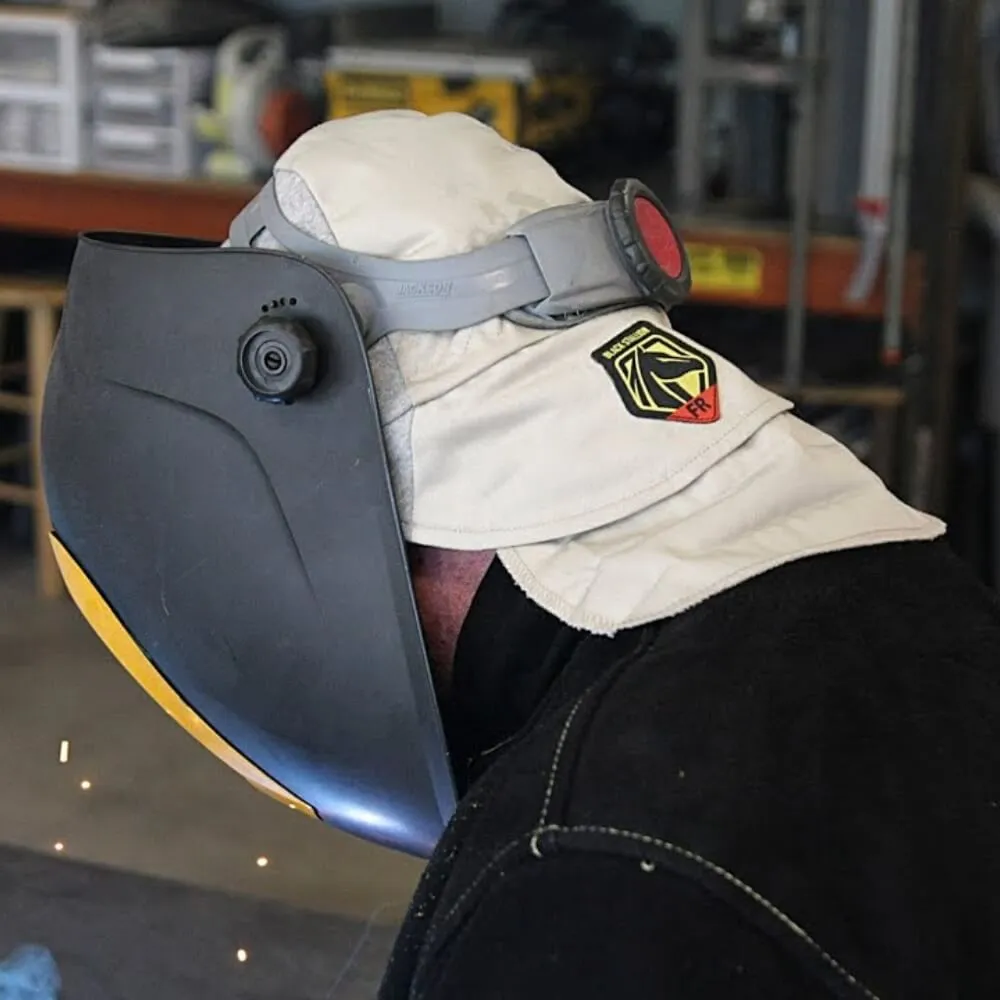
While helmets protect the face, the top of the head often remains exposed. This exposure becomes especially concerning when welding in overhead positions, where sparks can easily fall on the welder. Welding caps or bandanas provide a solution.
Crafted from flame-resistant materials, they protect against these falling sparks. Additionally, their design allows them to be comfortably worn under a welding helmet, ensuring the welder remains comfortable and protected throughout their task.
Conclusion
In the world of welding, where a fusion of metal is an everyday miracle, safety should never be an afterthought. Though mesmerizing, the dazzling arc and luminous sparks come with their own set of risks. As we’ve journeyed through the essentials of welding PPE in this guide, it becomes evident that each piece of protective equipment plays a pivotal role in shielding you from potential hazards. Whether you’re a novice setting out on your first project or a seasoned professional, always prioritize your safety by ensuring you’re adequately geared up.
Remember, quality work is born from skill and safety consciousness. With the right PPE, not only will you safeguard your health, but you’ll also set the standard for best practices in the industry. Stay safe, stay protected, and let the art of welding continue to illuminate your craftsmanship.

